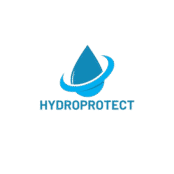The Power of Hotmelt Waterproofing for Investors
In the ever-evolving world of building and property management, hotmelt waterproofing is emerging as a superior solution for roof insulation. This cutting-edge technology is becoming the investor’s secret weapon for sustainable, resilient, and cost-effective infrastructure. Understanding why hotmelt systems are preferred over traditional waterproofing methods can aid decision-makers in creating value-driven projects. Below, we will delve into the science behind hotmelt waterproofing, its key benefits, and why it should be your go-to choice for roofing solutions.
What is Hotmelt Waterproofing?
Hotmelt waterproofing involves applying a seamless, monolithic membrane to the roof, which becomes a durable and flexible barrier against water infiltration. This technology uses a hot liquid rubber formulation that adheres directly to the substrate, forming a sturdy waterproof layer. The bond creates a continuous skin, eliminating the vulnerabilities found in traditional methods that use multiple layers and seams.
The Hotmelt Process
- Preparation: The substrate is cleaned and primed to ensure the hotmelt material adheres effectively.
- Application: Hotmelt is applied using specialized machinery that heats the compound to achieve its liquid state.
- Curing: As the hotmelt cools, it solidifies, forming a robust and waterproof barrier.
- Inspection: A detailed inspection ensures the application is thorough and all areas are covered.
Materials Used in Hotmelt
- Rubberized Bitumen: This key material provides flexibility and longevity to the membrane.
- SBS Polymers: These polymers enhance the elasticity and adhesive properties of the hotmelt.
- Filler Materials: Various types of fillers are used to increase the durability and stability of the solution.
Advantages of Hotmelt Waterproofing
Hotmelt waterproofing systems offer numerous benefits, making them an ideal choice for commercial and industrial buildings. Here are the primary advantages:
Durability and Longevity
The seamless application of hotmelt eliminates common weak points such as joins and seams, extending the life of the roof system. The robust nature of the hotmelt material provides buildings with prolonged protection against harsh weather conditions, UV radiation, and mechanical damage.
Cost-Effectiveness
While the initial investment in hotmelt roofing can seem higher than some traditional methods, the long-term savings are significant. The durability and minimal maintenance required translate into lowered repair costs over the roof’s lifetime, leading to better ROI for investors.
Environmental Impact
Hotmelt makes use of minimal solvents and can incorporate recycled materials into its formulation, contributing to a reduced environmental footprint. Additionally, its long-lasting nature minimizes the need for frequent replacements, reducing waste.
Applications in Commercial and Industrial Properties
Hotmelt waterproofing is especially beneficial in sectors like logistics, warehousing, and manufacturing, where roof durability and maintenance can significantly impact operational costs. Its suitability in a variety of settings makes it a versatile solution for property developers and managers.
Warehouses
In large warehouse settings, a reliable waterproof system is crucial to protect valuable inventory from potential water damage. Hotmelt provides a failsafe barrier that minimizes risk, ensuring business continuity.
Factories
Factory environments often have specific requirements including resistance to chemicals and temperature fluctuations, both of which are competently handled by hotmelt systems.
Implementing Hotmelt: Considerations for Investors
To maximize the benefits of hotmelt waterproofing, investors should partner with certified contractors who have experience in applying these advanced systems. Key considerations include:
Choosing the Right Contractor
- Verify their experience and track record with hotmelt applications.
- Request references and previous project examples.
- Ensure they provide comprehensive warranties.
Project Planning
- Assess the specific waterproofing needs of your property.
- Consider environmental factors and local regulations.
- Set a timeline and budget that accounts for potential unforeseen challenges.
Summary
Hotmelt waterproofing stands out as a superior choice for building insulation through its seamless application and long-lasting durability. Ideal for commercial and industrial properties, it offers reduced long-term costs, environmental benefits, and exceptional protection against water damage. Investors seeking a reliable and efficient roofing solution will find hotmelt technology to be a valuable asset in their construction projects. Partnering with experienced professionals ensures the best implementation, maximizing the potential of this advanced insulation method.

